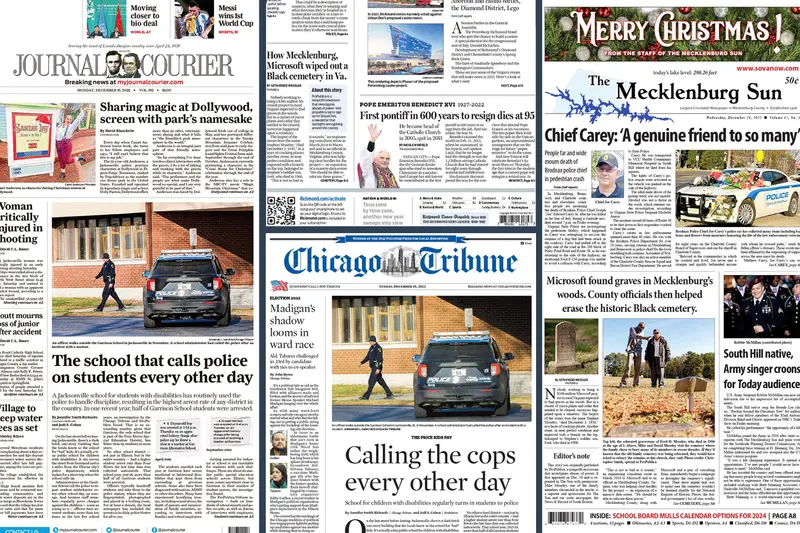News Articles - An Overview
Table of ContentsNews Articles Things To Know Before You BuyThe 8-Minute Rule for News ArticlesOur News Articles IdeasThe Ultimate Guide To News ArticlesNews Articles Fundamentals Explained
Excellent understanding of various topics offers trainees an affordable edge over their peers. Even though electronic and social media are easily obtainable, we need to not fail to remember just how essential it is to review the papers. Parents have to try and inculcate the habit of reviewing a paper as a day-to-day routine to proceed the tradition of the adored print medium.Information tales likewise have a minimum of one of the complying with crucial qualities relative to the designated audience: distance, prestige, timeliness, human interest, oddity, or effect. The associated term journalese is sometimes utilized, generally pejoratively, to refer to news-style writing. Another is headlinese. Papers usually abide by an expository writing style.
Within these limitations, news tales additionally aim to be extensive. Among the bigger and a lot more recognized newspapers, fairness and equilibrium is a major factor in providing details.
Papers with a worldwide audience, as an example, tend to use a much more formal style of writing. The particular choices made by an information outlet's editor or content board are commonly collected in a style guide; typical style overviews include the and the US Information Design Publication. The major goals of news writing can be summed up by the ABCs of journalism: precision, brevity, and clearness.
The 5-Second Trick For News Articles
As a policy, journalists will certainly not make use of a long word when a short one will do. They use subject-verb-object building and vibrant, energetic prose (see Grammar). They use stories, examples and allegories, and they hardly ever depend on generalizations or abstract concepts. News authors try to stay clear of utilizing the exact same word a lot more than when in a paragraph (in some cases called an "echo" or "word mirror").
Headings often omit the subject (e.g., "Leaps From Watercraft, Catches in Wheel") or verb (e.g., "Feline female lucky"). A subhead (likewise subhed, sub-headline, subheading, subtitle, deck or dek) can be either a subordinate title under the major heading, or the heading of a subsection of the post. It is a heading that comes before the main text, or a team of paragraphs of the major message.

Added billboards of any of these types may appear later in the article (particularly on succeeding web pages) to tempt more analysis. Such billboards are also used as pointers to the short article in other sections of the magazine or site, or as advertisements for the item in various other magazine or websites. Normal framework with title, lead paragraph (recap in strong), various other paragraphs (information) and call information.

Instance of a hard-lead paragraph NASA is proposing another room job. The spending plan demands around $10 billion for the job.
An "off-lead" is the 2nd most essential front page news of the day. To "bury the lead" is to start the write-up with history info or wikipedia reference information of second relevance to the visitors, forcing them to review more deeply right into an article than they ought to have to in order to uncover the crucial factors.
How News Articles can Save You Time, Stress, and Money.
Usual use is that one or more sentences each form their very own paragraph. Reporters typically explain the organization or structure of a newspaper article as an upside down pyramid. The important and most fascinating aspects of a story are put at the beginning, with sustaining information following in order of decreasing importance.
It permits individuals to check out a subject to just the depth that their curiosity takes them, and without the charge of details or nuances that they could consider unimportant, but still making that details readily available to much more interested viewers. The inverted pyramid framework also enables posts to be cut to any type of approximate size throughout design, to suit the area offered.
Some writers begin their tales with the "1-2-3 lead", yet there are many type of lead offered. This format invariably starts with a "Five Ws" opening paragraph (as explained over), followed by an indirect quote that offers to support a significant component of the initial paragraph, and after that a straight quote to sustain the indirect quote. [] A kicker can describe several points: The last tale current broadcast; a "pleased" story look at this web-site to finish the program.
Longer short articles, such as magazine cover posts and the items that lead the within sections of a anchor paper, are known as. Feature stories differ from straight news in several means.
Unknown Facts About News Articles
An attribute's very first paragraphs often associate an appealing minute or occasion, as in an "anecdotal lead". From the particulars of an individual or episode, its view rapidly broadens to abstract principles about the story's topic.

The Editor's Toolbox: A Reference Guide for Beginners and Professionals (2001) Allan M. Siegal and William G. Connolly. The New York Times Handbook of Design and Use: The Authorities Style Guide Made Use Of by the Writers and Editors of the World's The majority of Authoritative Paper (2002) M. L. Stein, Susan Paterno, and R.
Comments on “The Buzz on News Articles”